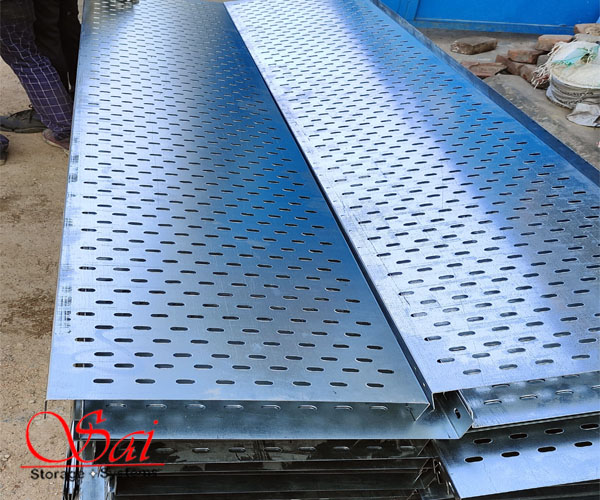
Sai Storage Systems employed a systematic approach to manufacture G.I. (Galvanized Iron) cable trays, recognizing their essential role in electrical installations.
Uses of G.I. Cable Tray:
Cable Management: G.I. cable trays are widely used for organizing and supporting electrical cables in industrial and commercial buildings. They provide a structured pathway that simplifies cable installation, maintenance, and troubleshooting.
Durability: The galvanized coating enhances the trays’ durability, making them resistant to corrosion, moisture, and mechanical damage.
Safety Compliance: G.I. cable trays help maintain a safe electrical environment by securely containing cables and reducing the risk of accidental damage or electrical hazards like short circuits.
Flexibility: These trays accommodate a wide range of cable sizes and types, allowing for easy modifications and additions as infrastructure needs evolve.
Versatility: Available in various widths, depths, and configurations (such as ladder trays, perforated trays, and solid-bottom trays), G.I. cable trays are suitable for diverse applications across industries including power generation, telecommunications, data centers, and more.
Sai Storage Systems utilized a structured approach to manufacture perforated cable trays, recognizing their critical role in electrical installations. Here’s an outline of their manufacturing process and the uses of perforated cable trays:
Material Selection: Sai Storage Systems carefully selected materials such as galvanized steel or stainless steel, ensuring durability and corrosion resistance suitable for various environmental conditions.
Surface Treatment: Depending on client requirements, trays were either hot-dip galvanized for outdoor use or powder-coated for indoor applications, enhancing their longevity and aesthetics.
Uses of Perforated Cable Tray:
Cable Management: Perforated cable trays are primarily used for organizing and supporting cables in industrial and commercial buildings. They provide a structured pathway for electrical, data, and communication cables, reducing the risk of damage and ensuring easy access for maintenance.
Ventilation: The perforations in the tray allow for natural air circulation around the cables, preventing overheating and maintaining optimal operating temperatures for electrical components.
Flexible Installation: Perforated cable trays can be easily modified on-site to accommodate changes in cable routing or additional cables, offering flexibility in system upgrades and expansions.
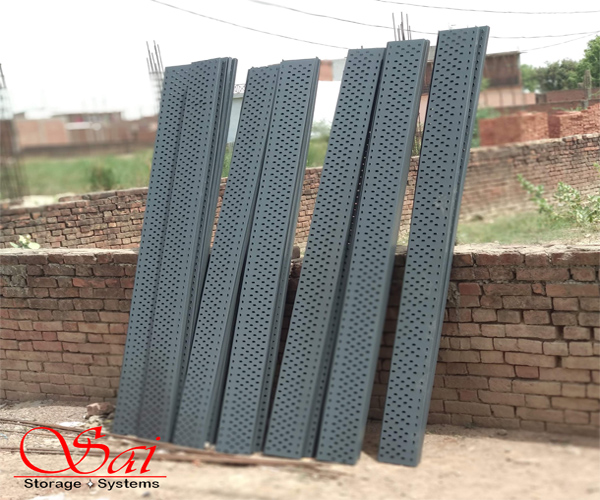
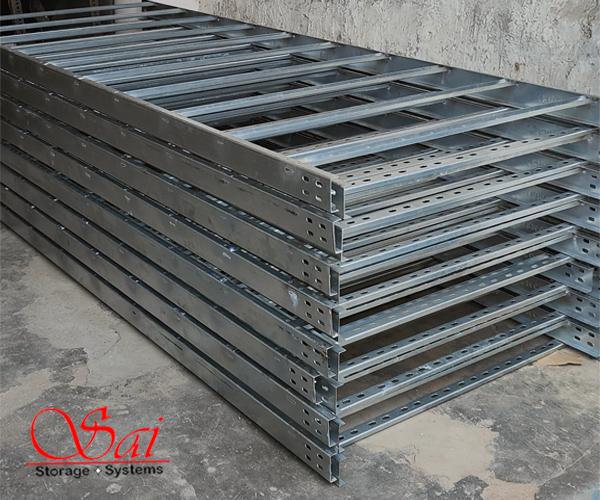
Sai Storage Systems followed a systematic approach to manufacture ladder-type cable trays, catering to the specific needs of cable management in various industrial and commercial settings.
Applications of Ladder-Type Cable Trays:
Industrial Facilities: Used extensively in manufacturing plants, refineries, and industrial complexes to support and route power cables, control cables, and instrumentation cables.
Commercial Buildings: Installed in offices, shopping malls, hospitals, and educational institutions to organize and protect data cables, communication cables, and electrical wiring systems.
Utilities and Infrastructure: Deployed in utility installations, transportation infrastructure, and renewable energy projects to manage cables across long spans and complex layouts.
Sai Storage Systems employed a systematic approach to manufacture powder-coated cable trays, leveraging the benefits of this finishing process for enhanced durability and aesthetics. Here’s an overview of their manufacturing process and the advantages of powder coating:
Benefits of Powder-Coated Cable Tray:
Durability: Powder coating provides a robust, protective layer that enhances the tray’s resistance to corrosion, chemicals, UV radiation, and mechanical damage. This ensures long-lasting performance, even in harsh industrial environments.
Aesthetics: The powder coating process offers a wide range of color options and finishes, allowing for customization to match the aesthetic requirements of different facilities. It provides a sleek, professional appearance that enhances the overall look of the installation.
Uniform Coverage: Unlike traditional liquid coatings, powder coating provides a consistent, smooth finish without drips, sags, or brush marks. This ensures uniform coverage over complex shapes and edges of the cable trays.
By utilizing powder coating technology in the manufacturing of cable trays, Sai Storage Systems provided their clients with reliable and aesthetically pleasing solutions for cable management in various industrial and commercial applications. The benefits of powder coating ensure that their products meet high standards of performance, longevity, and visual appeal in modern infrastructure projects.
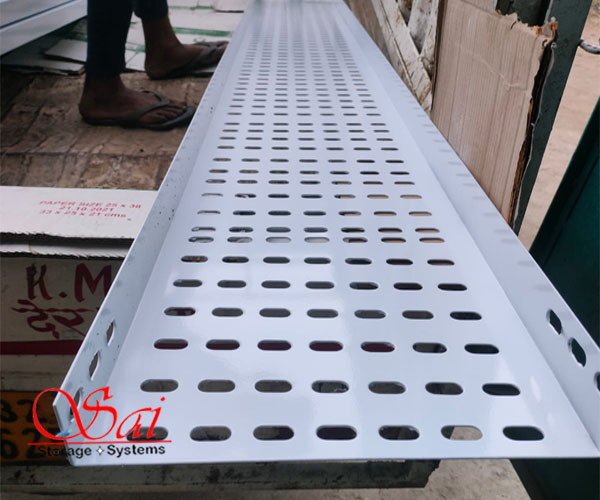

In cable tray installations, Junction boxes, L bends, and T bends serve important purposes in organizing, managing, and routing cables effectively.
Junction Box:
L Band (Elbows):
T Band (Tees):
A Raceway Cable Tray is a structure or system used to support insulated electrical cables, power, and communication lines in various settings such as industrial facilities, commercial buildings, and data centers.
Materials: Typically constructed from galvanized steel, aluminum, stainless steel, or occasionally from fiberglass or plastic materials.
Support: Provides a secure pathway and support for cables, allowing for easy installation, maintenance, and expansion of electrical and communication systems.
Mounting: Can be mounted on walls, ceilings, or floors, depending on the application and space constraints.
Uses of Raceway Cable Tray:
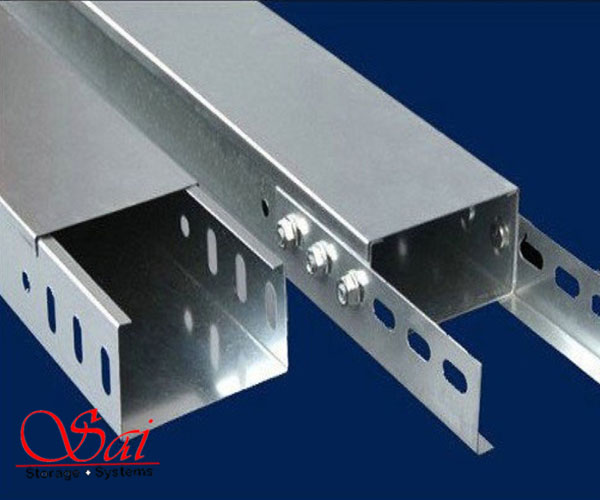
Crafted with high-quality materials and cutting-edge design, our supermarket display racks offer unparalleled durability and adaptability. From refrigerated units to end cap displays, we have the perfect system to showcase your products in the most compelling way.
